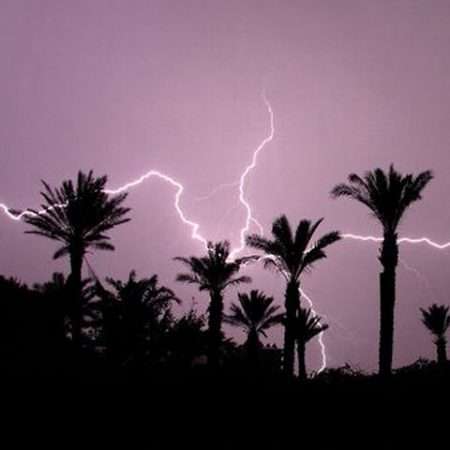Thunderstorms spread mercury pollution

In the southern United States, an afternoon thunderstorm is part of a regular summer day. But new research shows those storms might be doing more than bringing some scary thunder and lightning.
In fact, these storms are moving significant amounts of mercury to the ground.
In a new study published in the journal Environmental Science and Technology, Assistant Professor of Meteorology Christopher Holmes writes that thunderstorms have 50 percent higher concentrations of mercury than other rain events.
"The mercury is being transported into our region by winds, and tall thunderstorms are bringing it down to the earth," Holmes said.
Holmes and a team of researchers collected rain in a variety of locations in Florida, as well as Vermont, Georgia and Wisconsin. They then matched it to weather data that told them whether it was from a thunderstorm or just rain. They also used radar and satellite data to examine storm clouds.
In a regular rainstorm, clouds are only a few kilometers thick. In a thunderstorm, they reach about 15 kilometers thick. Researchers found that more mercury was in rain from the clouds that reached the highest altitudes.
"The highest concentrations occurred during thunderstorms and the lowest during a regular rainstorm," Holmes said.
For the last 20 years, the Mercury Deposition Network has recorded mercury content of precipitation across the United States. During this period, the states bordering the Gulf of Mexico have consistently seen the highest mercury deposition in the eastern U.S., typically double that of the northeast states.
Typically, the Southeast sees a high number of thunderstorms in the summer months. Holmes and his colleagues believe that this is the reason the Southeast has higher levels of mercury in rain.
Mercury is a naturally occurring chemical element that is used in several devices such as thermometers, barometers, fluorescent lamps and other devices. Exposure to high levels of mercury can be dangerous though.
Holmes said now that researchers know that the storms are spreading the mercury, they need to understand why there are high amounts of mercury at these higher altitudes and how it affects the Earth.
"We're trying to understand how mercury enters ecosystems in the U.S. and how it can affect people and wildlife," Holmes said.
More information: Christopher D. Holmes et al. Thunderstorms Increase Mercury Wet Deposition, Environmental Science & Technology (2016). DOI: 10.1021/acs.est.6b02586
Journal information: Environmental Science and Technology , Environmental Science & Technology
Provided by Florida State University




















